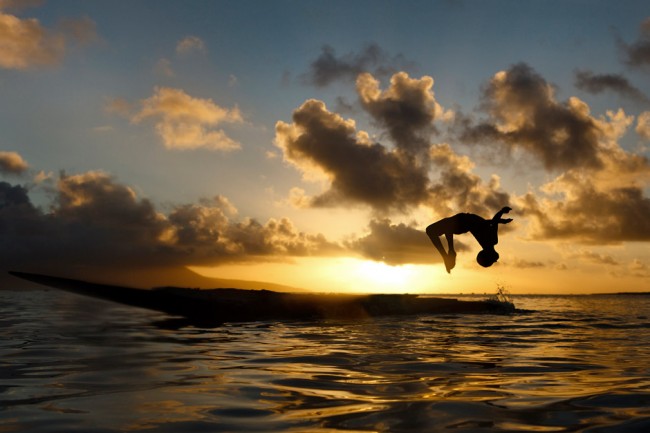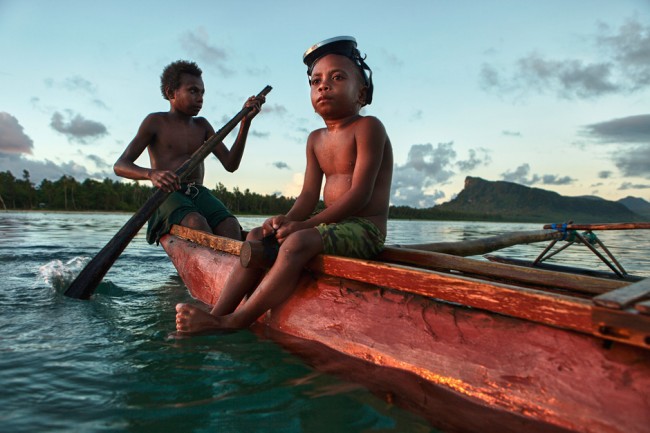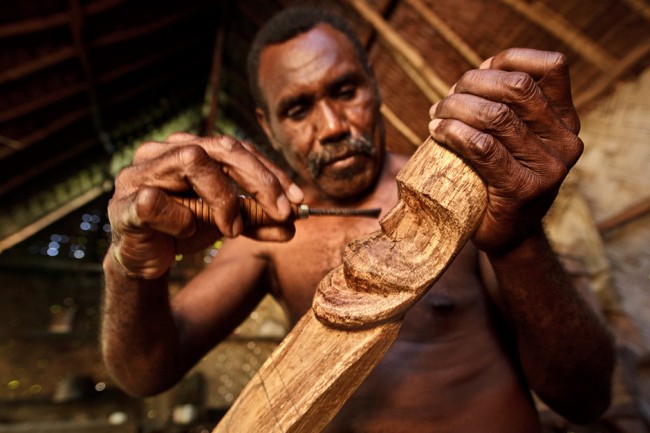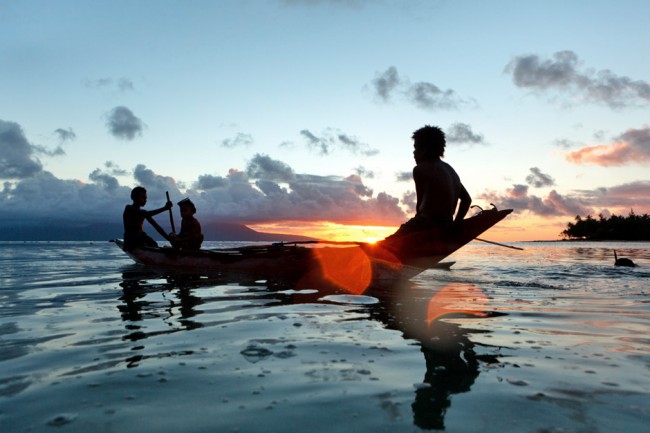Vast desert landscapes, nomads with weathered faces and blue robes, who fit the very definition of exotic, lots of sand and lots of camels! These describe my past week or so in Oulatta, a small desert town and home to this year’s cultural festival of Mauritania. As has often been the case through my African journeys so far, the last few days have been overfilled with excitement and awe, but also disappointment and frustration.
Into the Saghro Mountains
A month in Morocco and I feel that I am only scratching the surface, but finally starting to understand how some things work here. After being greeted by pleasantly easy going places free of hassle and annoying characters in the early goings, we eventually made it to the "other" part of the country.
My Love-Hate Relationship with Ethiopa: A Report
The fascinating cultures, the breathtaking landscapes, the ever present feeling that you are in a different time, a different dimension—this is what I absolutely love about Ethiopia. The constant feeling of being a human piggy-bank, the challenges in doing the simplest of things, the often occurring feeling that your new “friends” are measuring you up to see what they can extract from you—this is what I’ve come to hate beyond words about the country. I’ve been in Ethiopia for a bit over four months now. I know that many of the readers of this blog are photographers and travelers, some of whom have aspirations to come here. For this reason, I feel that I should write an account of sorts. One that is fairly uncensored and touches on the good, the not so good and the plain ugly sides of this incredible and incredibly challenging country.
The "Wild, Wild South" - Hanging out with the Hamer Tribe in the Omo Valley
In today’s world of technology and modernization it doesn’t make sense that there’s a place which lives virtually oblivious to that world. A place where ancient customs are still upheld strictly and where people walk around half-naked, with the little clothes that they wear being mostly those, which they designed hundreds of years ago. A place like that does exist and it’s called the Omo Valley. I had the opportunity to visit the area and to have a glimpse into the lives of the Hamer people by spending a few days in their village.
From the North to the East
When you drink four chocolate milkshakes at a Western cafe, when you would rather chat to other travelers than take photos, when you arrive at a camel market, but don’t care about shooting anything and just want to catch up on sleep—that’s when you know you’re getting tired, getting close to burning out.
Into the Heart of Ethiopia
Dramatic landscapes, kind, warm people and photographic inspiration at every corner - this was my romanticized vision of Ethiopia. Perhaps this vision was what made me all the more disappointed and emotionally deflated, when for over a month I came across more rudeness, dishonesty and overall strange treatment than anywhere else I had traveled. It took time and a lot of luck to meet the right people, to finally find the Ethiopia I dreamt of, but I have found it and, it is A-m-a-z-i-ng! I'll give you a bit of a background story to put things in perspective and then, to the photos.
Treasures in the Rock Mountains
The climb takes around forty-five minutes and it is literally a climb using your hands and feet for the last part of the journey. Holes in the vertical rock surface are what you use to keep yourself from falling off and to get to the top. As The "Lonely Planet" guidebook says, if you're scared of heights, "Don't look down!" Having a panic attack or"freezing" here would not be a good idea.
Festive Ethiopia - Timkat Madness in Gondar
Heat, huge crowds, continuous pushing and shoving, religious chants accompanied by war cries and the never ending tooting noise produced by vuvuzela-like instruments (those annoying things you heard at matches during the last world cup). This is Timkat (celebration of the Ephiphany) in Gondar. If you don't like any of the mentioned, this isn't the place for you. I didn't know any better, so I went.
Orthodox Christmas in Lalibela
Lalibela is Ethiopia’s answer to Jerusalem. In fact, it is often referred to as “The New Jerusalem” and it even has its’ own “Golgotha.” The legendary town is known for its’ incredible rock hewn churches. It is a place of elaborately dressed deacons and priests and a center for thousands of pilgrims who come during special occasions to recharge their “spiritual batteries.” Lalibela was one of the main reasons that I wanted to come to Ethiopia so badly. Thankfully, I wasn’t disappointed.
The Journey through Spain and Portugal
All Journeys Have to End
Just under two months in India and my Himalayan adventure has come to an end. As usual, time flew by very quickly and as usual I wish I could stay longer. I am tired though. This trip was intense in so many ways. Riding in the mountains does take a toll on the body and the motorbikes. Both “machines” have cracked chassis from the horrendous (but spectacular) Zanskar road.
Like a Fairytale
The villages of Spiti Valley are ridiculously picturesque. The landscapes, the people’s faces, in some cases, their costumes and in others, the combination of everything, I often feel like I am in a fairytale. It’s hard to believe that such places still exist, but I sure am glad that they do. Dhankar was one of the more fairytale-like villages that we visited and here are some images from there.
Building roads above the clouds
Journey of a Lifetime
Winding roads with sheer drops to hundreds of meters, huge rocks being exploded to clear those roads, ancient cultures clinging to their timeless ways of living and of course, incredible, awe-inspiring mountains, everywhere you look. This trip of mine to the Himalayas has been as exciting, as adventurous and as creatively satisfactory as I had dreamt and hoped it would be.
Let There be Blood! Good Friday with Infanta Penitents
Good Friday in the town of Infanta may have very well been the most absurd experience I’ve ever had in all of my travels. Just when I thought I was starting to understand how things “work” here, I was proven otherwise. The documentary photographer part in me was saying “Chill dude, you’ve seen ‘unusual’ rituals before”. But the regular person kept screaming, “This is some craaazy shit!” As the titles suggests, there was indeed blood involved. Just felt obliged to warn you all.
Ati-Atihan or when Catholic and Tribal traditions converge
I knew about Ati-Atihan festival much before I came to the Philippines, I saw images of it numerous times, they always fascinated me. When I realized that I was in the country at the time that the festival would be held, in its’ original location Kalibo, I decided to try my best to make it to Kalibo to shoot this colorful and dramatic event.
Blood Sport - Cockfighting
I was riding back (on a rented motorcycle) to the city of Dumaguette from my little paradise on the beach and noticed a large building with a sign “Dumaguette Cockpit”. From the inside of the building I could hear a rowdy crowd, I came up to the entrance to make sure that this was indeed what I thought it was. I was assured by the ticket-selling lady that this was the place where cockfights took place and that the fights would continue from morning till midnight everyday for the next few days.
The city of Vigan and a video
I’ve left the cool Cordillera mountains for the warmth of the plains and a rather amazing city (more like town) by the name of Vigan. Vigan is supposed to have the highest amount of preserved colonial buildings anywhere in the Philippines and I have to say that these old Spanish/Mexican/Chinese/Filipino “relics” make the town very atmospheric indeed...
A few days in the Cordillera and some thoughts
Close to Paradise
As I mentioned in my last post about Bob, my photography to assist tourism development continued in Rah Lava and to a lesser extent the bigger, neighbouring Mota Lava. The two islands belong to the very remote Banks group, they’re pretty much in the middle of nowhere, surrounded by endless stretches of the Pacific ocean. If you’re looking for a place to completely escape the busy, modern world and you like the sea, this is the place to escape to.
I’ve seen a lot of beautiful places over my travels and it’s not that easy to impress me anymore, however, I am a sucker for sea and mountains and whenever I find a place with both, well, I instantly fall in love. It’s not that I like to climb mountains, it’s that I love the sight of mountains rising over the sea. In my books it’s hard to come up with a better backdrop to a photograph than something like that. The beach and the lagoon at Rah Lava offered me those very kinds of backdrops, along with some fairly thick, lush greenery in the island’s interior. Besides the great scenery Rah Lava had something else to offer and that was some incredibly amazing (usually very expensive, but not here) seafood – I managed to live out my dream of eating lobster for breakfast, lunch and dinner (ok, I’m sick, I know, but it’s so tasty). Of course, to top it all off, as elsewhere in Vanuatu the people were absolutely wonderful. Quite naturally, I had to stay a while in Rah and I did, it was my longest stay in Vanuatu so far – two and a half weeks.
The reason I came to Rah was because George Thompson, the man I was helping out in South West Bay advised me to make the journey there and help out a man (in the same way – take photos for marketing) by the name of Luke Dini or Father Luke as he introduces himself (he’s a retired pastor). Both George and Father Luke were members of Vanuatu’s bungalow association, in fact they were probably the first two men to join a few decades back. The association was meant to set some sorts of standards for bungalows as well as service in those bungalows. The government was meant to help out and direct tourists to those places which were a part of the association.
It appears however that whatever project the government of Vanuatu undertakes, that project is destined for not fulfilling its potential and that has certainly been the case here. Father Luke opened his Bungalow in the seventies and he waited for fifteen years for the first foreign visitors, who happened to be a group of New Zeland Yachties needing to stay on land for just one night. After that there were no more tourists for another five years, but for whatever reason Father Luke didn’t abandon his idea of running a bungalow.
For years the place would receive just a handful of visitors a year, most of them - discount-seeking government workers who found the bungalow through the association (they seem to be the only people who turn to the association to find accommodation). From my understanding, the income was meagre, but Father Luke understood; for a small community like that of Rah Island, tourism was the only kind of business that would empower the locals and give them a chance to earn a decent enough income. Perhaps more importantly, it could keep the youth closer to home and this is a big thing, considering that many young, ambitious Ni-Vans leave remote places like Rah in search of jobs on the more developed Efate (where the capital Vila is) and Santo (where the second capital Luganville is located). Most often the youth come back, disillusioned, disappointed in their experiences in the world outside. The money they earn on the more developed islands is small in comparison to their sky-high expenses of living away form home. Things like food and accommodation are free for them, while they stay close to home in the huts that they build, near their gardens and the sea in which they know every fishing spot. In the outside world everything has a price tag and because of foreign investment and influence, things are pretty much out of reach for the regular citizen of Vanuatu.
When the youth come back to places like Rah after a disappointing tenure in the capital, they find themselves in an unusual situation. Having been exposed to the world of televisions, DVDs and night clubs they can’t look at life in a quiet island paradise without modern facilities in quite the same way. Sometimes they come back with new skills, which they can’t use because there are no industries of any sort. They’re left in-between two words, confused, a little frustrated and dreaming of what things would be like if their fortunes turned.
Father Luke had a vision, he felt that the presence of tourists on Rah could contribute to the entire community. Starting from the canoe-taxi across the lagoon from “mainland” Mota Lava, which every visitor must take to get to the bungalow, to the fishermen, lobster and coconut crab catchers who sold their catch to his the restaurant, to the traditional dance performers and so on. Everyone would benefit, everyone interested would have a chance to earn an income which was while fairly small, went a long way on an island like Rah. I was surprised that Father Luke was able to see such a big picture, this was very unusual for a man from a remote, forgotten island in the Pacific.
It turned out that Father Luke, besides being a Church pastor in the past, was a politician in the more distant past. In fact he was second in charge of all of Vanuatu during the colonial years and secretary to the president, once Vanuatu gained its independence. I was pleasantly surprised that Father Luke resigned from his high position because he strongly opposed the increasing corruption in the higher ranks of the government. It was then only at the beginning of its growth, these days the corruption in Vanuatu is legendary.
“My wife liked living the lavish lifestyle, having chauffers and eating in restaurants, so she didn’t want me to quit. I told her this; we can continue like that, but in a few years you will lose your husband, for I cannot stand living a lie, I’ll probably die from stress, from a heart-attack or something like that. I want to keep my dignity and to be able to look in the eyes of the people back home on Rah.” These were Father Luke’s words, to which his wife replied – “Let’s go home” meaning their modest house on Rah Island.
And so in some ways Father Luke is similar to George Thompson. He is a man who puts dignity and community above money and easy life. Thankfully, unlike George, after years and years of struggle things have taken turn for the better for Father Luke’s bungalows. They probably get close to thirty visitors a year on Rah Island and although the number does not seem impressive, it is when you consider the beginnings.
Since this is a photography and travel blog, I feel obliged to tell the readers about Rah Island as a travel destination, not only a photography destination. As I mentioned, it’s the ideal place to escape the hustle and bustle of the modern, developed world. It’s still not luxurious comfort living, but there is solar power, a shower and flush toilets – things that are not so common in the outer islands of Vanuatu. Father Luke’s bungalows are pretty cheap too, not South East Asia cheap, but fairly cheap by other standards. It’s about US$30 per person per day and that includes food, which after my recommendation will include more fresh fish and the possibility to eat lobster and coconut crab whenever your heart desires.
Ok, that’s enough of that. Let’s get to the photographs. The one above is of a local kid doing a back-flip from a canoe in the lagoon.
Saron returning from her family’s garden with the village dog. Vanuatu is one of the greatest agricultural societies on the planet, every family has a garden and every village family lives from one. The gardens are usually located somewhere in the bush and almost daily a family member will venture out there in order to tend to the crops or to bring some produce back home.
Silas and Young lobster hunting. The men look for familiar spots where they’re likely to find the crustaceans. The easiest time to catch them is during the moment of feeding, which lasts for approximately half an hour in the evening.
Silas putting one of the lobsters into the boat.
While on the subject of edible crustaceans, here’s another one – the legendary coconut crab. Near extinction in most of the world, the coconut crab is in abundance in lots of the Torba province, of which Rah and Mota Lava are a part. As you can see they grow pretty big, in fact according to Wikipedia, it is the largest-living arthropod on the planet. Those claws mean business too, Joseph is very experienced at catching and handling the creatures. Here some village youngsters watch him as he separates the coconut crab from his bate – the coconut.
As I mentioned in the last post, the men of Vanuatu are generally pretty amazing tree-climbers. By the time they’re teenagers they are strong enough to climb some crazy-big trees. David is one such teenager. As many other boys his age he climbs up trees to hunt (with a sling-shot) small birds and flying foxes, a delicacy in many parts of Vanatu.
Another image of Bob and his son Jeff. I wanted to include this one here just to emphasize the incredibly clear water around the reef. I’d dreamt about being in places like this for a looong time, now I feel like I’m getting a little spoilt.
The view out the front of the bungalow, just after sunset. Like I said, I’m a sucker for sea and mountains.
Dimitry (front) is one of Father Luke’s grandchildren. The kid is a CHARACTER, that’s for sure. He’s only four, but he’s very savvy, Tanya had to work real hard to become his buddy, he’s the type of kid who you have to constantly attract with something interesting. Dimitry is also unusually interested in his tradition (for a small child) he always tries to perform the island’s famous snake dance with the bigger boys and has a great sense for music and rhythm.
Franklin is a master wood carver, he creates some true masterpieces. Interestingly though, while Franklin learned the technique of wood-carving from his father, he learned how to carve more complex traditional works from photographs taken in a Museum of Pacific Arts somewhere in Europe. His ancestors sold a lot of the carvings to Europeans over a century ago and even the elders in his village (on Mota Lava) had never seen the carvings in the photographs.
Through a strange twist of fate, the “white men” who laid path for the destruction of the culture of the inhabitants of Rah and Mota islands over a hundred years ago also managed to save a part of it and to indirectly help revive the same part of that culture many decades later.
Franklin is a fascinating man and not only because of his determined approach towards wood-caring, it wasn’t unusual for him to go through five pieces of wood before getting things just right. Franklin is also a field worker of Vanuatu’s cultural centre, which means that he studies and records his own culture. Had I had more time I would have gladly spent hours chatting to the man, asking him endless questions.
The snake dance of Rah has become famous all over Vanuatu. It is usually performed at weddings and special occasions, but these days it’s become a regular performance for tourists too. I have to say that usually I think stuff like that is lame, but I’ve reconsidered that approach in Vanuatu and particularly with the snake dance. We watched it about 4 times and every time it was pretty cool.
A dancer having his body and face painted for the snake dance. I don’t know if anyone who is not part of the dance group has been behind the scenes for this dance before, back in the day seeing the preparation was strictly taboo. The paint used, as well as the material of the costumes were the performers’ secret and if anyone were to find out that secret they may have very well been killed, such was the kastom law.
A view from the rock of Rah, one of the most accessible high view points I’ve ever come across (you can get there in about 10 minutes from the village). No photograph will do it justice. From the rock you have a 360 degree of the surroundings and they are magnificent.
I couldn’t resist including another shot of children in a canoe in the lagoon. That place was ideal for photography – dramatic mountain backdrop on one side and the setting sun on the other, doesn’t get much better than that.
That’s all for now folks.














